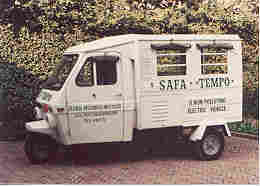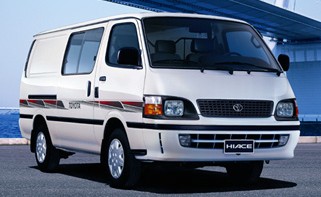public transport
Living in the same apartment as two British people, I find myself inevitably using vocabulary picked from The Queen's English. This began as a way to make daily life go a bit smoother. It's not a big thing, no woeful ennui, but after you ask to be handed a cup and you get a mug when you wanted a glass, you learn that it'd just be easier on everyone, however little, if you asked for a glass. A sweater's a jumper, a straight drink is a neat drink, and the fuzzy winkle's in the steak and kidney pie. I've had British friends before, but that was in America where I think they'd been using American vocabulary in the same sort of way. Good friends, making it all a bit easier. The point is that now and then, I find myself using Ewan and Nini's vocabulary with Americans. This brings us to the title "public transport".
Yesterday, we got out of Kathmandu. We went south to His Majesty's Government Depart of Plant Resources Royal Botanical Garden, Godavari, Nepal - that's what the ticket called it. It was great, about 30 minutes away and 1000 feet higher than Kathmandu. Sitting next to a fountain there in the garden, I realized we hadn't been out of Kathmandu/Patan since we'd gotten back from the Annapurna trek. That's a month. After one month in the rough air, unique urban scents, and bustle of Kathmandu, it was great to be in a green garden with good air and lots of calm. I once went five weeks at Stanford before I realized I hadn't left campus in that time, but yesterday's trip to Godavari was much better than the trip to Jack In The Box that broke that Stanford record.
Beside the gardens and good air, we found out Godavari is a major picnicing destination for Kathmandu residents. We followed the music to find hundreds of Nepalis having a good time in one side of the gardens. These people reinvent picnicing. They bring all their equipment on the bus. Each group of around 20 or 30 Nepalis had their own stereos, dances, liquor supplies, and propane stoves with friers. We sat down to watch it all and the nearest group took us in and shared their food with us. Hot out of the frier spicy dried buffalo, masala peanuts, french fries, and sauteed pork belly - this is upper shelf stuff! Great hospitality.

And how did we get to Godavari? Public transport. Public transport comes in three varieties in Nepal: the bus, the three-wheeled tuk-tuk (pictured above), and the microbus (pictured below). While the Nepalis brought all their equipment on the roofs of busses, we took the faster public transport variety: the microbus. The Toyota Hi-Ace, specifically, is popular in and around Kathmandu. For 7 rupees (USD0.10), you can get to the center of Kathmandu. For 10 rupees, you can get to Godavari. Each microbus has a definite route, but there's no overall map and the microbusses have no markings indicating their route. You have to listen to the kid hanging out the window when he shouts destinations. The same kid handles the fare and packing two more people into the bus, no matter how full it already is. Between the kid and the driver, they have a pretty good racket going. More manuverable than a bus, more get up and go than a tuk-tuk, the microbus is the fastest of the public transport options.

The Toyota Hi-Ace is, according to Toyota, a 14 passenger vehicle. Let's contexualize this. This thing is no bigger than a mid-nineties US best-seller: the Dodge Caravan. Not the Grand Caravan, the Carvan. Not the new Caravan, which got bigger and fatter like every other American vehicle and most Americans in the last 10 years. The mid-nineties Carvan. In fact, the Toyota Hi-Ace is narrower. Back home, if you want to transport 14 people, you get one of those 24-foot-long roll-over-specialist extended full-size vans. You would never put 14 people in a Dodge Caravan back home.
On the way to Godavari, I counted 25 people in the Hi-Ace, including the driver and the kid who handles the money. I thought this may be a distorting figure, what with all the small children, but on the way back, there were 23 people, none under 16. You could feel the rear suspension bottoming-out as we bounced onto the uneven dirt shoulder, later popping back onto the pavement while the 18-year-old microbus driver laid on the horn passing slower traffic on the blind mountain turns.


2 Comments:
This summer I spent some time on minibuses. Amazing how many people they can fit in there. The best time was when I'd been staying at this out of the way national park, in vietnam, and needed to first find someone to take me on their motorbike the 5km to the nearest paved road.
And then, standing on the side of the highway with the entire village, who had all come out to make sure I flagged down the correct bus to Hue, and that I didn't pay too much. Seriously, the whole village.
And then the microbus itself. They made room for me and my bag, which was very generous, since there were probably 15 people in there, including an old woman and her entire belongings. That's chickens and a pig, folks.
William: I'm taking your good advise and posting my comments anonymouosly. This is so much easier. As I've told you before, I greatly enjoy reading your blog, as does your dad's accountant, lawyer, farm manager, farmers, et al. They are sincerely interested in what you're doing--and you write very well. It's quite "readable."
I especially want to comment regarding your report on "Public Transport." It reminded me so much of my two years in Paraguay in the Peace Corps. We too had microbuses, crowded with people, crazy wild drivers leaning on the horn almost constantly, and fare collectors hanging our the door shouting destinations and pushing two more people onto the bus.
We didn't have any three-wheeled public transport, but we did have big old buses, with wooden frames and very hard wooden seats. These too were slower and less expensive. It always reminded me of taking the "milk train" to Chicago. You stopped at practically every cross road, and you picked up not only people but whatever else they happened to be taking to town--chickens, pigs, fruits and vegetables--or bringing back home--kerosene for their stoves and lamps, big bags of flour or sugar, new TVs, whatever goods they had bought with their money made at the market.
Riding the bus was always an adventure, and almost always resulted in some new human/cultural story. When my folks and Aunt Georgia came to visit me in Paraguay, they always seemed to enjoyed their bus rides, and actually referred to them in their later years as the source of some of their best travel memories. When I was in Central Illinois in early November, Georgia and I actually laughed again about changing buses at two cross roads out in the middle of no-where somewhere in the middle of Paraguay. I had been there before and knew that many buses took these two roads, but I think all three of them thought we might stand out there in the hot sun until we finally collapsed and died of thirst.
Post a Comment
<< Home